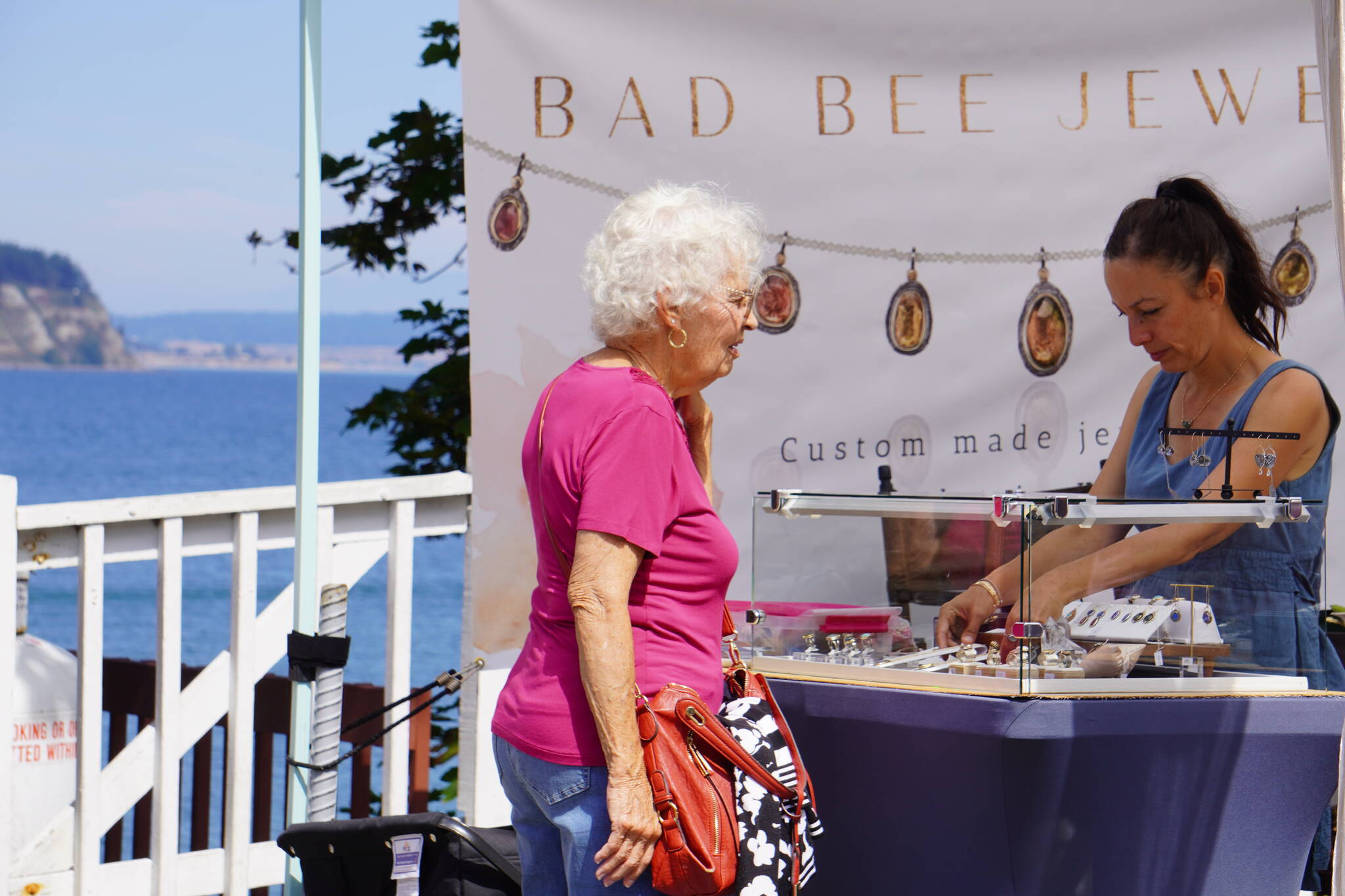By sizing down the yearly Arts and Crafts Festival, the Coupeville Festival Association has seen greater success and is now ready to give back to the community.
Next week, the association will be awarding grants for a total amount of about $60,000, the largest amount ever, according to President Deborah O’Brien.
The grant recipient presentation and annual meeting is open to all and will take place at 6 p.m. on Jan. 6 at the Pacific Northwest Art School, located at 15 Northwest Birch Street in Coupeville.
According to a press release, some of these grants are devoted to the Island County Historical Museum’s efforts to repair and preserve the Alexander Blockhouse, the Coupeville School District Cheer Squad’s travel costs and mascot costume, safety improvements in downtown Coupeville, sailing opportunities for students through the Whidbey Island Maritime Heritage Foundation, art supplies for the Juvenile Detention Arts Program and more.
In the spring, the association will also award five $2,000 scholarships to high school seniors who have volunteered during the two-day event and who plan to further their education, according to O’Brien.
The 2024 edition of the festival was a success, with about 12,000 visitors buying almost $400,000 worth of merchandise in two days. Given the initially uncertain future of festivals in the post-pandemic world, O’Brien found this to be a significant win.
“I think people decided they just want to enjoy life a little bit more,” she said.
The association has also cut expenses by focusing exclusively on the art booths, not offering a beer garden or live music. O’Brien said the change happened after the pandemic as an effort to reduce the spread of COVID-19.
This was received positively by vendors, who in previous years saw visitors gravitate more towards the beer garden and the entertainment. Town merchants have also appreciated the change, with some reporting they had “the best day ever,” O’Brien recalled.
“We were required to do it, and the people loved it,” she said.
By reducing the number of vendors, she said, the association also made the festival less crammed, allowing for more space between booths and keeping the crowd less dense. Before the pandemic, the festival would count 240 booths. Now it’s about 140 vendors, based on Whidbey or as far away as the Midwest.
“We only select the best of the best,” she said.
By supporting artists, visitors help ensure the festival remains a yearly tradition and that it can continue to fund a variety of local causes. Vendors in fact contribute 15% of their proceeds to raise money for grants, scholarships and the next festival, O’Brien said.
During its lifetime, the Coupeville Festival Association has donated over $1.2 million to the community, the press release states.
Since 1964, the festival has been a staple in the community — which has recently become Washington’s 19th creative district.
In its first year, the festival counted about 15 artists and was born to raise money to rebuild downtown Coupeville, which at the time was a “ghost town” with buildings that were falling apart, O’Brien said. Every merchant donated $5 to repaint the buildings, host an art festival with 19 booths and sell corn on the cob.
The association was officially recognized as a nonprofit in 1970. The festival has been growing since, now taking about 11 months to plan and put together and involve people of all ages, including scouts and elders, with a total of about 300 volunteers in 2024, O’Brien said.
Youths are encouraged to get involved as older volunteers and organizers are aging out, O’Brien said. Furthermore, students can qualify for scholarships that are strictly based on volunteerism and not on their performance in school. Even adults who decide to go back to school later in life may qualify, she said. Scholarships may only be used to help cover the cost of tuition in college, university or trade school.
The 2025 Arts and Crafts festival is set for Aug. 9-10. For more information, visit coupevillefestival.com.




